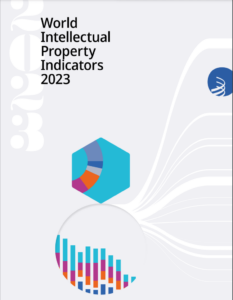
On 24 July, 2023 the Delhi High Court had passed a detailed order in Vifor v. MSN Laboratories, reading Process by Product patent claims within the Indian patent regime. Explaining the nitty gritty of these types of claims, the court refused to grant an injunction to Vifor (the plaintiff) and allowed the defendants to launch their products in the market. Merely 17 days later, a Division Bench of the High Court has now placed a stay (pdf) on the operation and effect of the above directions by the Single Judge, with unclear reasons.
The DB order acknowledged that Claim no. 1 of the suit patent is a product patent claim, whereas Claim no(s). 2- 6 are process patent claims. Then it focused on the novelty and non-obviousness of the plaintiff’s product and the “Guidelines for Examination of Patent Applications in the Field of Pharmaceuticals” to prima facie disagree with the Single judge’s finding on the suit patent being a product by process patent alone. However, what does the court mean by “product by process patent alone”? Does it mean that the DB considers the suit patent to be a “Product” and “Product by Process” patent? Or a “Process” and “Product by Process” patent? Or did it mean that the suit patent is not a product-by-process patent but rather is a good old product patent? The order does not specify any of the above.
Furthermore, the DB order focused on the patentability of the appellant’s product i.e. Ferricum Carboxymaltose (FCM) and noted that the respondent was not able to “dislodge the claim of novelty insofar as FCM as a product is concerned” or that the product falls within the prior art. Owing to the above reasons the DB was unable to concur with the findings of the Single Judge that the suit patent is a product by patent alone. But, as discussed in an earlier post, in the case of product-by-process patent claims, on the basis of the assessment of the novelty and non-obviousness of the product claims, a patent is granted to the application. Furthermore, the court in the single judge order did not find that FMC was not eligible for patent protection, in fact the single judge order specifically observed (in para. 92) that neither party addressed arguments on invalidity but focused only on infringement analysis. Therefore, it is a little confusing to see that the DB order has granted a stay on the basis of the validity of the suit patent’s product, whose novelty or obviousness was not the bone of contention in the impugned order, without touching upon the question of infringement by the respondent.
Regardless of the above, the DB order does throw light on an important aspect of litigation i.e. the time taken by the courts in passing the reserved orders. The Single Judge order was passed 7 months after it was reserved. Such long waiting time impacts not only the defendants, who might be subjected to additional hardships like the continuation of earlier interim measures, but the whole litigation, as it may risk important documents and submissions falling through the cracks. But this discussion is up for some other day.
In my previous post, (linked above) I highlighted how there is unclarity over product-by-process patent claims within the Indian patent regime. Thanks to this order, the confusion still persists. For now, what matters is that the DB has set aside the directions in the Single Judge order and thus effectively has halted the respondents from launching their products in the market. But it looks like this injunction will lapse soon as the patent is set to expire on 20 October 2023.
Hat-tip to two readers of the blog, who would like to stay anonymous, for sharing this order.
- SEO Powered Content & PR Distribution. Get Amplified Today.
- PlatoData.Network Vertical Generative Ai. Empower Yourself. Access Here.
- PlatoAiStream. Web3 Intelligence. Knowledge Amplified. Access Here.
- PlatoESG. Automotive / EVs, Carbon, CleanTech, Energy, Environment, Solar, Waste Management. Access Here.
- PlatoHealth. Biotech and Clinical Trials Intelligence. Access Here.
- ChartPrime. Elevate your Trading Game with ChartPrime. Access Here.
- BlockOffsets. Modernizing Environmental Offset Ownership. Access Here.
- Source: https://spicyip.com/2023/08/a-division-bench-stays-the-directions-in-the-vifor-v-msn-labs-product-by-process-claims-order.html
- :has
- :is
- :not
- $UP
- 1
- 17
- 17 days
- 20
- 2023
- 24
- 7
- a
- Able
- above
- acknowledged
- Additional
- After
- allowed
- alone
- am
- an
- analysis
- and
- Anonymous
- any
- Application
- applications
- ARE
- arguments
- Art
- AS
- aspect
- assessment
- basis
- BE
- being
- Blog
- BONE
- but
- by
- case
- claim
- claims
- confusing
- confusion
- considers
- continuation
- Court
- Courts
- day
- Days
- defendants
- Delhi
- detailed
- DID
- directions
- discussion
- Division
- documents
- does
- e
- Earlier
- effect
- effectively
- eligible
- Ether (ETH)
- examination
- explaining
- fact
- Falling
- Falls
- field
- Find
- finding
- findings
- focused
- For
- from
- Furthermore
- good
- grant
- granted
- had
- hardships
- High
- Highlighted
- How
- However
- HTML
- HTTPS
- i
- image
- Impacts
- important
- important aspect
- in
- Indian
- infringement
- IT
- jpg
- judge
- July
- Labs
- later
- launch
- launching
- light
- like
- linked
- Litigation
- little
- Long
- LOOKS
- Market
- Matters
- max-width
- May..
- mean
- measures
- merely
- might
- months
- motion
- MSN
- my
- Neither
- no
- noted
- novelty
- now
- observed
- october
- of
- Old
- on
- only
- operation
- or
- order
- orders
- Other
- over
- PARA
- party
- passed
- Passing
- patent
- patent protection
- persists
- picture
- plato
- Plato Data Intelligence
- PlatoData
- Post
- previous
- Prior
- process
- Product
- Products
- protection
- question
- rather
- readers
- Reading
- reasons
- regime
- reserved
- respondents
- Risk
- s
- see
- set
- sharing
- single
- some
- Soon
- specifically
- stay
- Still
- Submissions
- such
- Suit
- taken
- thanks
- that
- The
- their
- then
- There.
- therefore
- These
- this
- Through
- Thus
- time
- to
- touching
- two
- types
- unable
- upon
- Waiting
- was
- What
- whereas
- WHO
- whole
- whose
- will
- with
- within
- without
- would
- zephyrnet












